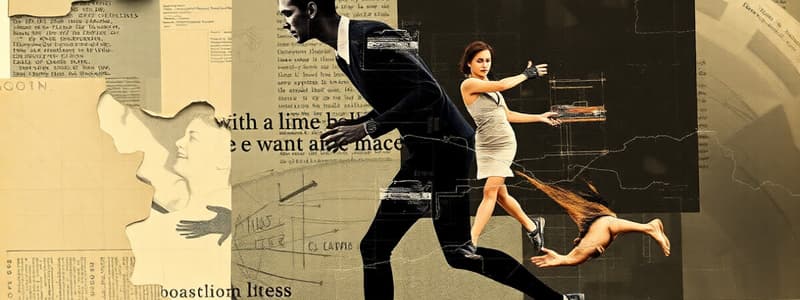Podcast
Questions and Answers
What term describes the study of movement without considering the forces involved?
What term describes the study of movement without considering the forces involved?
- Kinematics (correct)
- Arthrokinematics
- Kinetics
- Osteokinematics
Which of the following best defines 'torque' in biomechanics?
Which of the following best defines 'torque' in biomechanics?
- The linear momentum of a moving body
- The speed of a body's movement
- The mass of an object times acceleration
- A force that causes rotation (correct)
What type of motion involves a movement around an axis?
What type of motion involves a movement around an axis?
- Static motion
- Translatory motion
- Linear motion
- Rotatory motion (correct)
In the context of joint movements, what does the term 'convex-concave rule' refer to?
In the context of joint movements, what does the term 'convex-concave rule' refer to?
Which biomechanical concept refers to the resistance of a body to change its state of motion?
Which biomechanical concept refers to the resistance of a body to change its state of motion?
Flashcards
Biomechanics
Biomechanics
The study of movement and forces acting on the human body.
Kinematics
Kinematics
Describes the motion of the body without considering the forces causing it.
Kinetics
Kinetics
Studies the forces that cause or affect the motion of the body.
Osteokinematics
Osteokinematics
Signup and view all the flashcards
Arthrokinematics
Arthrokinematics
Signup and view all the flashcards
Study Notes
Introduction to Biomechanics and Kinesiology
- Course presented by Dr. Animesh Hazari, PhD, MAHE, Manipal, MS Clinical Biomechanics, Associate Professor at Gulf Medical University, Ajman, UAE on December 28, 2024.
Learning Outcomes
- Define biomechanical concepts and terminology.
- Discuss biomechanical principles related to the human body.
- Understand kinetic concepts like inertia, force, torque, and impulse in the human body.
- Analyze forces on the human body during static and dynamic activities.
- Evaluate biomechanics and pathomechanics of human motion.
Introduction - Biomechanics
- Subtopics include kinematics and kinetics.
Osteokinematics
- Includes descriptions of translatory motions, rotary motions, freedom of motion, and end feel.
Arthrokinematics
- Discusses joint types.
- Covers rolling and gliding (convex-concave rule).
- Explains open and closed kinematics.
Studying That Suits You
Use AI to generate personalized quizzes and flashcards to suit your learning preferences.




